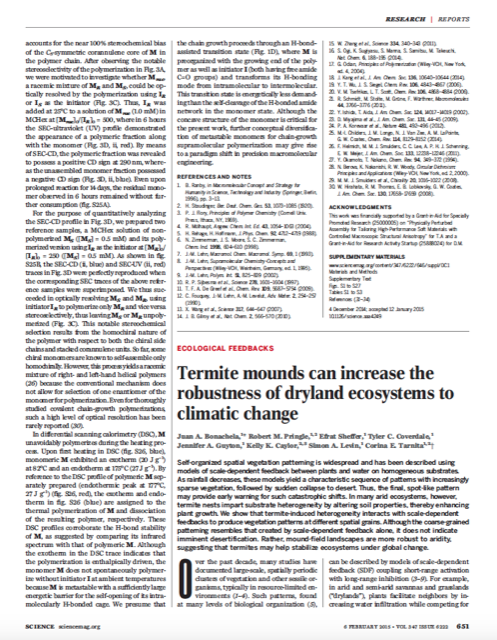Termite mounds can increase the robustness of dryland ecosystems to climatic change

Bonachela, J.A., Pringle, R.M., Sheffer, E., Coverdale, T.C., Guyton, J.A., Caylor, K.K., Levin, S.A., Tarnita, C.E.: Termite mounds can increase the robustness of dryland ecosystems to climatic change, Science, Vol. 347 Issue 6222, pp. 651-655, doi: 10.1126/science.1261487, 2015.
Self-organized spatial vegetation patterning is widespread and has been described using models of scale-dependent feedback between plants and water on homogeneous substrates. As rainfall decreases, these models yield a characteristic sequence of patterns with increasingly sparse vegetation, followed by sudden collapse to desert. Thus, the final, spot-like pattern may provide early warning for such catastrophic shifts. In many arid ecosystems, however, termite nests impart substrate heterogeneity by altering soil properties, thereby enhancing plant growth.We show that termite-induced heterogeneity interacts with scale-dependent feedbacks to produce vegetation patterns at different spatial grains. Although the coarse-grained patterning resembles that created by scale-dependent feedback alone, it does not indicate imminent desertification. Rather, mound-field landscapes are more robust to aridity, suggesting that termites may help stabilize ecosystems under global change.
